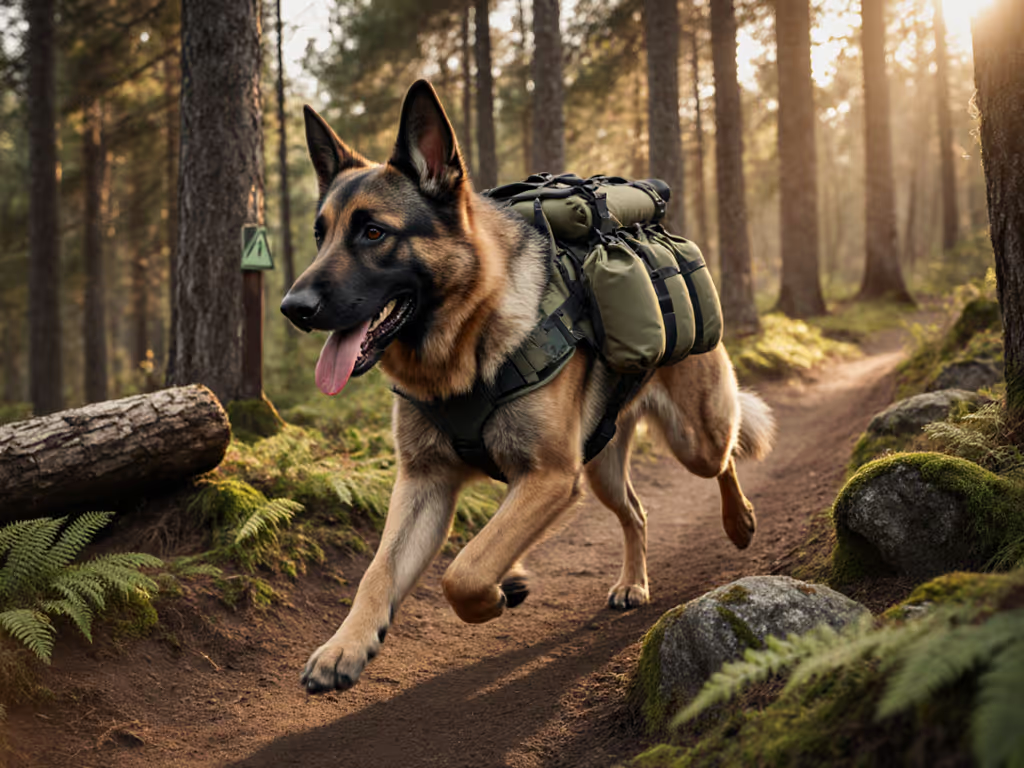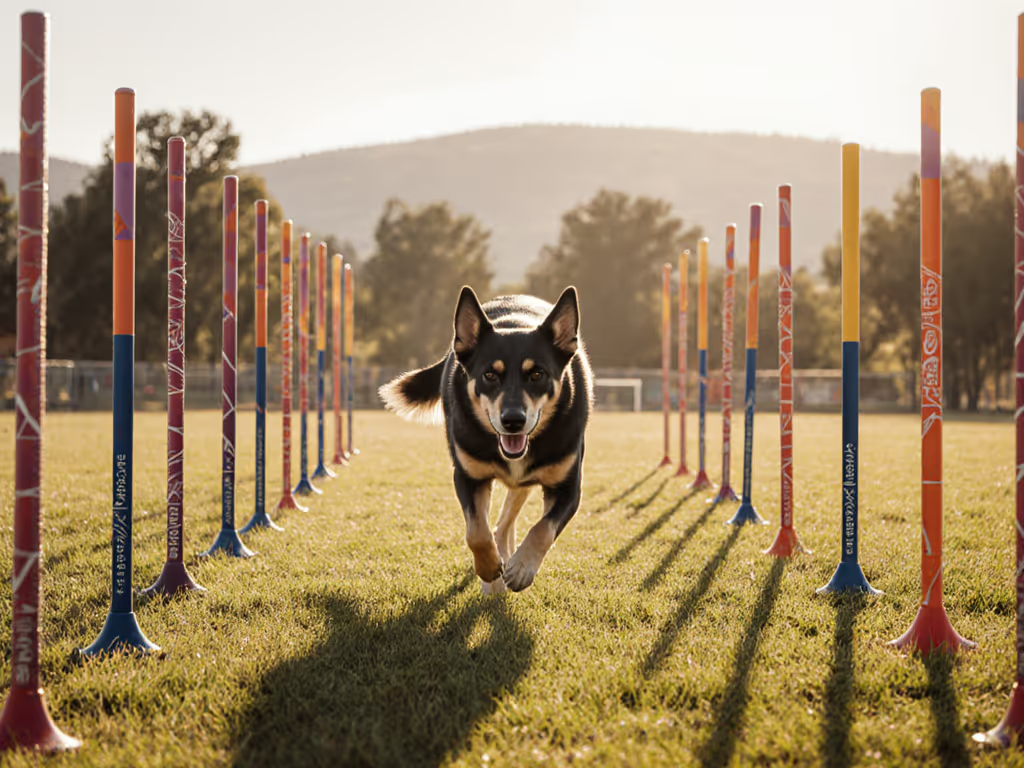
TotoFit Wedge Review: Safe Stability for Puppies & Seniors

When I conducted that TotoFit wedge review for my own practice, I knew I'd found something special, a canine wedge platform that finally delivered what so many dog guardians desperately need: a stable foundation for building confidence. I remember sitting cross-legged in a client's cramped apartment hallway, watching her teacup poodle take ten calm steps toward the door with zero pulling. Tears welled in her eyes (this was the first time in months) they'd completed a simple walk to the exit without chaos. What made the difference? A properly sized wedge, three-minute threshold work, and the gentle repetition that builds true fluency. Today, I'm sharing why this simple tool has earned its place in my stage-based training kits for puppies and seniors alike.

HarderWill Yoga Foam Wedge Blocks
Why Low-Level Instability Training Matters More Than You Think
The Hidden Connection Between Balance and Leash Manners
It might seem counterintuitive at first: how does standing on a wedge translate to better leash walking? Yet nearly every handler I coach experiences the "aha" moment when they realize their dog's pulling stems from instability anxiety, not disobedience. When a dog feels unsteady beneath their feet (whether on slippery floors or uneven sidewalks) they brace against the leash for security. This creates a vicious cycle: tension breeds more tension, until both ends of the leash feel like they're in a tug-of-war. If you're new to this concept, start with our canine fitness basics for safe, age-appropriate guidelines.
The beauty of the TotoFit wedge lies in its ability to build proprioception (body awareness) through controlled instability. Unlike inflatable discs that shift unpredictably underfoot, the TotoFit wedge offers:
- A completely flat, non-slip base
- Gradual 2.75" incline at its highest point
- Dual-textured surfaces (smooth on one side, nubby on the other)
This creates what I call "safe uncertainty": just enough challenge to engage stabilizing muscles without triggering panic. In my decade coaching stage-based training, I've found dogs who struggle with street reactivity often gain remarkable confidence through just 3-5 minutes of daily wedge work at home. Small wins, stacked safely, build calm, confident teams.
Safety First: Why This Matters for Vulnerable Dogs
When working with puppies or seniors, fall risk isn't just inconvenient (it can create lasting fear associations). The TotoFit wedge's stable platform nearly eliminates tipping hazards that plague inflatable alternatives. I personally own the TotoFit Brand wedge and like it a lot (I think it's especially nice for puppies and older dogs because the fall risk is almost zero).
Unlike air-filled balance tools, the TotoFit wedge:
- Won't suddenly deflate mid-exercise
- Provides consistent resistance every session
- Has no "give" that could surprise a nervous dog
- Allows for precise foot placement (critical for pups developing coordination)
This safety-first design aligns perfectly with my core belief that calm, consistent reps create confidence for both ends of the leash. One client's 14-year-old Shih Tzu began tentatively placing paws on the wedge after just two sessions, and within three weeks, she was comfortably standing on it for balance exercises that helped her navigate our neighborhood's uneven sidewalks.

The Sofia Martínez Stage Gate System for Wedge Training
Home Setup Checklist: Getting Started Right
Before introducing any equipment, complete this five-minute setup:
- Surface Check: Place wedge on non-slip mat (I recommend rubber-backed canvas)
- Footing Test: Press firmly on all four corners, no wobble should occur
- Approach Path: Clear 3-foot buffer zone around wedge for safe mounting/dismounting
- Reward Zone: Position high-value treats within easy reach (but not on the wedge)
- Handler Posture: Stand sideways to wedge with knees slightly bent (reduces looming)
This simple preparation checklist eliminates common beginner mistakes that cause frustration. I've seen so many guardians skip these steps only to wonder why their dog won't approach the equipment!
Progression Checklist for Puppies (3-16 Weeks)
| Stage | Criteria | Time Expectation | Stress-Reduction Tip |
|---|---|---|---|
| Foundation | Paw touch on wedge | 2-3 days | Place smelly cheese on surface edge |
| Partial Load | 1-2 paws sustained 3 seconds | 3-5 days | Click before paw lifts off |
| Full Contact | All four paws on wedge | 5-7 days | Toss reward off wedge to encourage dismount |
| Active Balance | Hold position during gentle head turns | 7-10 days | Start with chin touch as anchor behavior |
| Transition Ready | 10-second sustained stand | 2 weeks | Pair with "let's go" door cue for street work |
This progression reflects my handler posture cues philosophy: reward the process, not just the end position. When a puppy hesitates, I'll often sit beside the wedge and gently tap my own foot, "Lower the criteria, keep the success", until they're ready to try again.
Progression Checklist for Senior Dogs
Seniors need modified expectations but the same structured approach:
- Approach Only: Reward any voluntary movement toward wedge (no physical guidance)
- Single Paw: Accept partial weight-bearing if full placement causes discomfort
- Sit-to-Stand: Use wedge to encourage controlled weight shifts (reduces joint strain)
- Targeted Work: Focus on problematic limbs by adjusting wedge angle
- Integration: Pair with existing mobility routines (e.g., post-massage balance work)
For arthritic dogs, I often recommend placing the wedge against a wall for extra security. For broader routines tailored to older dogs, see our senior dog fitness guide for low-impact progressions. One client's 12-year-old Lab began holding positions 40% longer when allowed to lean slightly against the wall, and this small accommodation preserved the exercise's benefits while honoring her physical limits.
TotoFit Wedge vs. Alternatives: What Really Matters
Comparing Canine Stability Platforms
After testing dozens of balance tools, here's how the TotoFit wedge stacks up against key competitors:
| Feature | TotoFit Wedge | Inflatable Discs | Human Yoga Wedge |
|---|---|---|---|
| Stability | ★★★★★ (flat base) | ★★☆☆☆ (slippery movement) | ★★★☆☆ (narrower platform) |
| Texture Options | Dual (smooth/nubby) | Single (often slippery) | Single (usually smooth) |
| Puppy Safety | Burst-resistant material | Sudden deflation risk | Not designed for paws |
| Size Accuracy | True to spec (14"x14") | Often smaller than advertised | Standard human sizes |
| Longevity | 5+ years with proper care | 1-2 years typical | Varies by material |
The TotoFit wedge's standout feature is its veterinary-tested design, unlike human alternatives repurposed for dogs, it's built specifically for canine biomechanics. If you're considering pods for balance work, check our PawPods comparison to avoid slippery, unsafe options. The 14"x14" size accommodates everything from Chihuahua puppies to senior Labs, while the dual-textured surface provides traction options for different paw sensitivities.
Budget Considerations: When to Splurge vs. Save
I'll be transparent: at $59.95, the TotoFit wedge costs more than basic yoga wedges. But in my experience, this is where "a splurge on the slightly more expensive option will really pay off." Consider these factors:
- Puppy households: Worth every penny, the construction prevents the bottom from 'poofing out' during enthusiastic play
- Multi-dog homes: One wedge often serves multiple sizes (unlike height-specific platforms)
- Long-term use: Unlike inflatables that degrade after 1-2 years, this solid platform lasts for years
- Safety ROI: Prevents costly vet visits from slips/falls during training
For budget-conscious guardians, I suggest starting with just the wedge rather than full kits. It's the single most versatile piece for foundational balance work, everything else builds from this essential tool.
Real-Life Integration: Beyond the Living Room
Home-to-Street Transitions Made Simple
The true test of any training tool is whether it translates to real-world success. Here's how I bridge wedge work to street manners:
- Threshold Training: Practice wedge work near doorways to build calm exit habits
- Surface Transfer: Move wedge to porch/deck to generalize skills on different textures
- Short Reps Outside: Place wedge on sidewalk for 90-second balance sessions before walking
- Confidence Carryover: Use the "up" cue from wedge work during street distractions
This staged approach finally gave me the "one-block walk" success that led to two-block walks, and eventually relaxed neighborhood tours. To match equipment to your dog's pulling style, see our front-clip vs back-clip harness guide before heading out. The key is maintaining those small wins that build genuine confidence (not just temporary compliance).
Small wins, stacked safely, build calm, confident teams.
Multi-Dog Household Strategy
When coaching households with multiple dogs, I use the wedge as a "training hub," one piece serving different purposes simultaneously:
- Puppy: Focuses on full-body weight shifts
- Adolescent: Works on duration during distractions
- Senior: Uses wall-supported partial loading
By rotating through positions every 60-90 seconds, all dogs get dedicated practice within a single 10-minute session. This efficient approach respects time-constrained guardians' reality while ensuring consistent progress across all dogs.
Final Verdict: Who Should Buy the TotoFit Wedge
After thorough testing in my coaching practice, I give the TotoFit wedge my highest recommendation for:
- Puppy parents wanting safe, vet-approved developmental tools
- Senior dog guardians seeking gentle mobility support
- Rescue adopters working with under-socialized dogs
- Service dog trainers building foundational stability
- Any handler struggling with leash reactivity rooted in instability
I do not recommend it for:
- Dogs over 100lbs (check TotoFit's larger platform options)
- Households wanting instant results (this builds gradual confidence)
- Owners seeking punishment-based tools (this is positive-methods only)
The TotoFit wedge review I conducted for myself became an automatic addition to my home-street transition kits because it solves what so many tools miss: it creates genuine physical confidence that translates directly to calmer leash work. For guardians feeling overwhelmed by conflicting advice, this tool provides clear, stage-gated progress that builds in measurable increments.
Your Actionable Next Step
Tomorrow morning, before your first walk, spend just three minutes on this foundational exercise:
- Place the wedge near your front door (flat side up)
- Lure your dog to stand on it with a single high-value treat
- Wait for all four paws to settle, then say "yes!" and toss reward off the wedge
- Repeat just 3 times. Stop while your dog is succeeding
That's it. You've just planted the seed for calmer exits, better balance, and (eventually) those relaxed walks you've been dreaming about. Lower the criteria, keep the success, and watch how those small moments stack into real transformation. When you're ready to deepen this work, revisit these progression checklists as your natural next step toward confident street manners.



